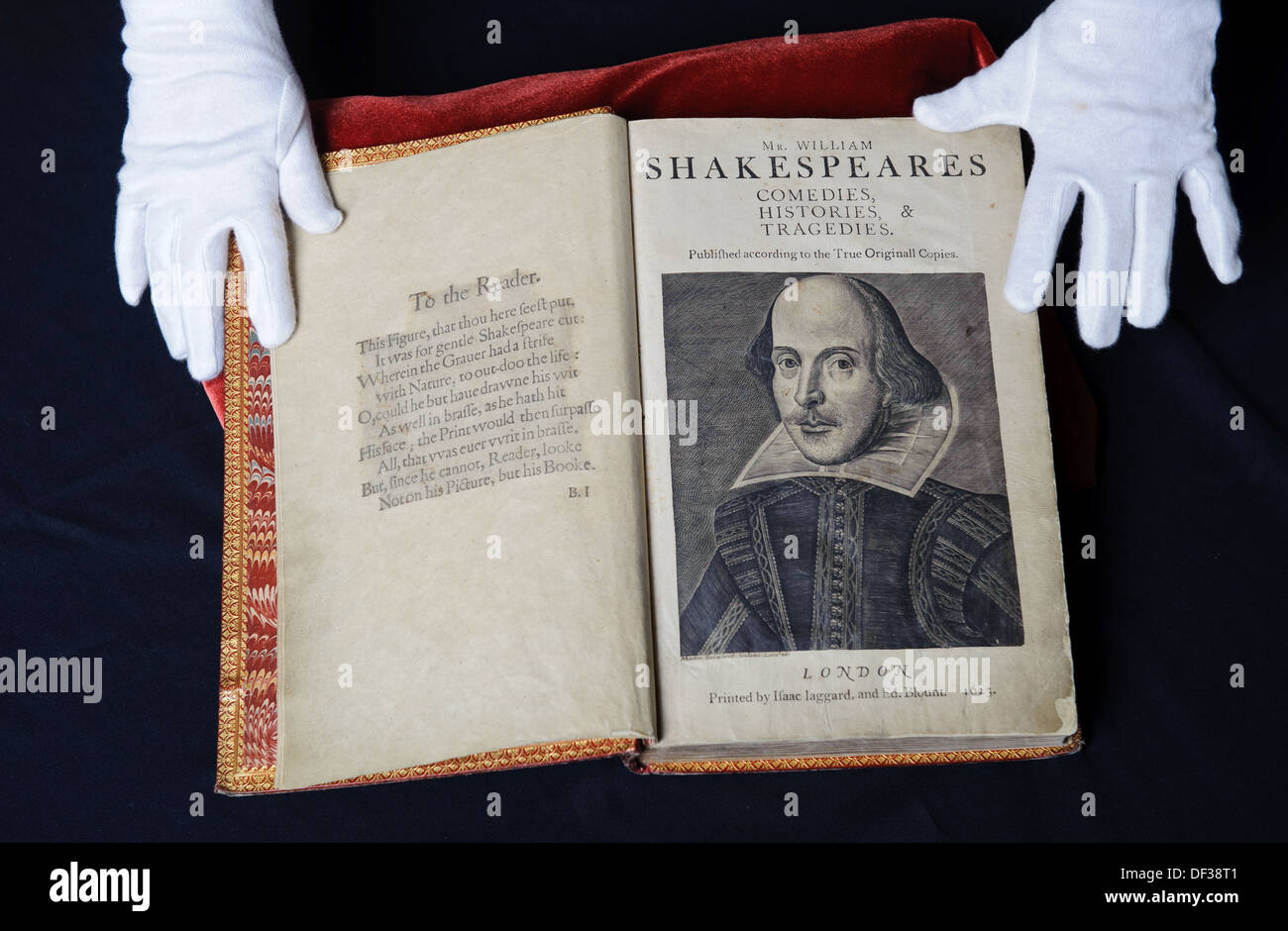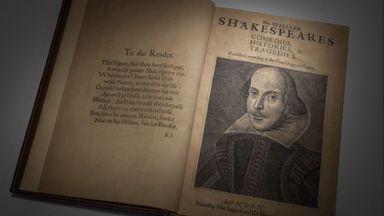

The Library accounts show that in 1663-4 Richard Davis, the Oxford bookseller, paid £24 for 'superfluous Library Books sold by order of the Curators'. The clear presumption is that the First Folio was considered out of date and was sold as superseded by the Third Folio! But it did not appear in the 1674 Catalogue, which lists only the Third Folio (1663). It appeared in the 1635 appendix to the 1620 Catalogue. This copy was sent to be bound by William Wildgoose, and was duly returned to the Library. The Bodleian's First Folio was received on publication, under the arrangement with the Stationers' Company. (Some of the Folger's seventy-nine are pretty beat up.) The Bodleian is a special case, and there's a curious story there. That is because Martin Bodmer made it a rule never to buy a duplicate, and always to insist on a copy in first-class shape. Trinity College, Cambridge has two copies, and the superb Bodmer Library, Zurich, has one. George III got there first, ahead of the Americans, with his Royal Library (incorporating David Garrick's collection of old plays). The British Museum has five copies of the First Folio. Other libraries have not been idle, of course. Huntington had bought up the Duke of Devonshire's library). One is in the British Museum, the other in the Huntington Library of California (that great 'collection of collections, or library of libraries'. Only two copies are known of the 'Bad' First Quarto of Hamlet. The world knows of the folios, but the collector dreams above all of landing a quarto. It is still the only known copy to exist. Short time later the prize was in his hands. Cable immediately two thousand pounds direct toĪccount of Petrus Johannes Krafft, Ricksbanken, Malmo, Sweden' and a

'Representative now in Sweden' the following day came a second The treasure, and then waited, he tells us, in growing apprehension.įive days later came over the wires the laconic message: Representative post-haste to Sweden to negotiate for the purchase of In great excitement heĬabled to his London agent, Henry Sotheran and Company, to send a Mr Folger was thus enabled to read of the discovery in an eight-lineĭispatch to The New York Times of January 11. It had turned up among the possessions of a Swedish postal clerk, which he had inherited from his father, and the find was reported in 1905: Nothing conveys better the flavour of Folger's early days than John Quincy Adams' account of the pursuit of the first edition of Titus Andronicus.

The rarest of these treasures are the Shakespeare quartos. Within a classical exterior is a Tudor interior within that are steel vaults controlled for humidity and temperature, so as to guarantee the absolute security of the library's treasures. These he housed eventually in the Folger Shakespeare Library, a monumental gift to the nation. He became however President and Chairman of the Standard Oil Company, and devoted his large income to buying books. Sooner or later, a third of the extant copies fell into the hands of a great collector, whose name dominates the later story of the book: Henry Clay Folger.įolger (1857-1930) was not a man of huge wealth to begin with. That made it expensive, and the copies must have been fairly well looked after. It is thought that perhaps 1000 were printed, with a price at £1 (forty times the cost of an individual quarto). Some 240 copies are known to be in existence. Oddly enough, the First Folio, for all its fame, is not really a rare book. If you want to know about first folios, go to the Folger. No doubt this book dealer displayed naivety, but the man went to the right place. The book had been stolen from a display case in the University of Durham. He was immediately arrested and then charged by police in Durham. One such showed up recently, when a man took a stolen copy of the First Folio to the Folger Shakespeare Library in Washington, D.C., to have the copy authenticated. Now known as the First Folio, that volume is the focus of the world's collectors, scholars, and-occasionally-thieves. That was the format in which a number of Shakespeare's plays had been printed, during and after his lifetime, and the Collected Plays (as we would say) came out in 1623, seven years after his death. The folio format makes for a large, prestigious book, which has to be bound quarto is half the size, suitable for a paperback edition. Fold it again and you have a quarto, with one sheet supplying eight pages. Retrieved from įOLIO, a sheet of paper which is folded in half, making two leaves or four pages. APA style: Shakespeare: the first folio.Shakespeare: the first folio." Retrieved from
SHAKESPEARE FIRST FOLIO YT FREE


 0 kommentar(er)
0 kommentar(er)
